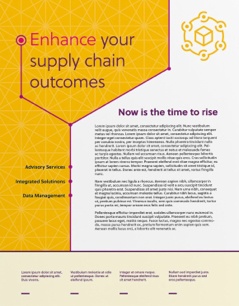 With a wide array of cloud-based applications on the market, many organizations are saying goodbye to outdated, legacy systems and adopting new Software as a Service (SaaS) solutions. These tools are changing the game in spend management, providing companies with increased visibility across all areas of spending and identifying new opportunities to drive cost savings.
With a wide array of cloud-based applications on the market, many organizations are saying goodbye to outdated, legacy systems and adopting new Software as a Service (SaaS) solutions. These tools are changing the game in spend management, providing companies with increased visibility across all areas of spending and identifying new opportunities to drive cost savings.
However, despite all of the obvious benefits associated with these cloud systems, implementing a new tool across an enterprise can still be very challenging. For example, change resistance is often problematic when it comes to encouraging end users to utilize new systems. Without proper planning, you risk running into multiple issues that could derail the process and prevent a successful implementation .
Below are the top four risks associated with implementing cloud-based spend management solution:
1. Getting Suppliers On Board
To successfully implement a new spend management solution, supplier enablement is imperative. The amount of work that’s necessary to get all of your suppliers on board with the implementation is commonly underestimated. In order to get it right, you should develop a supplier enablement strategy that carefully outlines each step of the process. Make sure you clearly communicate all of the changes that will take place, what your expectations are for suppliers, and how implementing the new tool will improve day-to-day workflows.
2. Navigating the Integration
Don’t believe all the hype that you hear during sales demo—take everything with a grain of salt and follow up with questions about the integration process. Even if the integration sounds simple, remember that somebody has to do the work. There are several things to address regarding integration: Who is doing the mapping and file transformation? Which Enterprise Resource Planning (ERP) system will be used? Whose standard is being adopted?. You will also want to learn the integration method and inquire about any limitations per integration object. Make sure the vendor spells out all of these details before you sign a contract. This will guarantee you aren’t met with any unwelcome surprises down the road.
3. Achieving End-User Adoption
Although it has become much easier with SaaS-based source-to-pay (S2P) and procure-to-pay (P2P) systems, achieving end-user adoption is still one of the biggest challenges that organizations face when implementing a new tool. The resistance to adoption typically begins when specific use cases are overlooked or not addressed appropriately. Lack of support from senior leadership, poor communication, and inadequate training can also be roadblocks to end-user adoption. You can avoid these roadblocks by considering all applicable use cases and crafting a detailed communications plan that includes all key stakeholders.
4. Addressing All Use Cases
To avoid resistance and ensure your new spend management tool is meeting your needs, make sure you have selected a solution that will address each unique use case. Ask yourself: Who will be using the tool and for what purpose? Simply having an assortment of features and functions isn’t enough. In order for the implementation to be a success, you need to make sure you understand how the tool’s features and functions specifically address all of the use cases to ensure the solution meets your business needs.
Although it’s certainly important to keep these major risk factors in mind, don’t let these challenges get in the way of implementing a cloud-based SaaS solution at your organization. Creating a carefully outlined implementation plan will help mitigate risks and ensure the process goes smoothly for everyone involved.
Are you having trouble selecting a new spend management system or navigating a complex integration? Contact RiseNow today for a free supply chain consultation to help get you started.







Comments